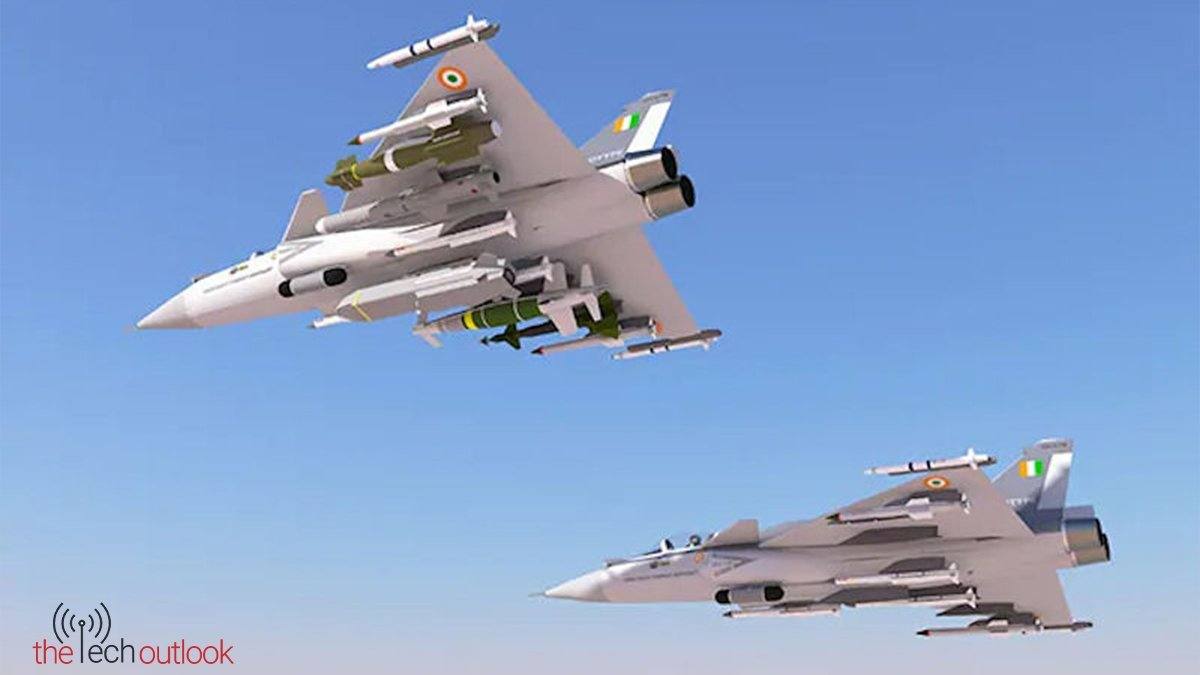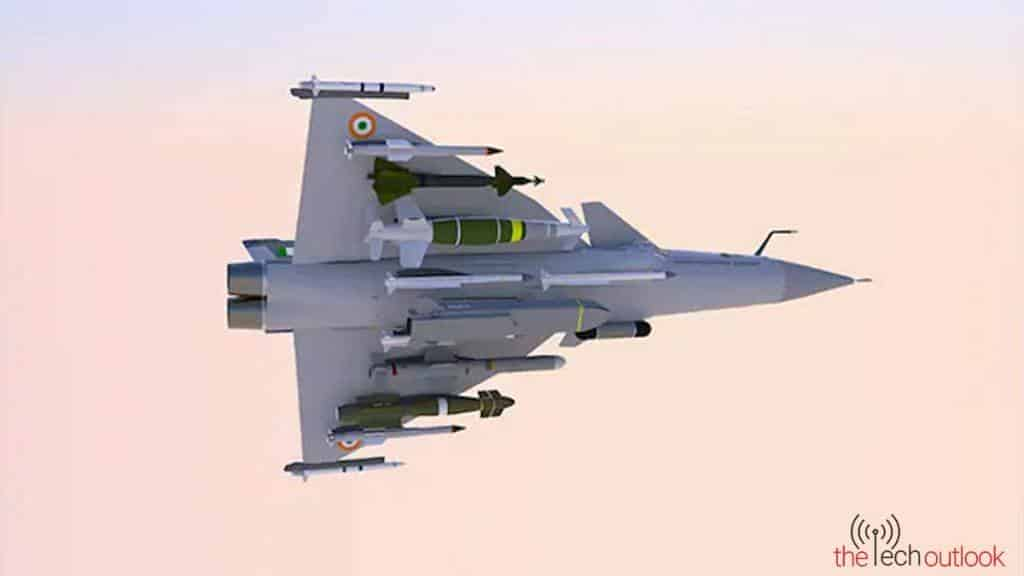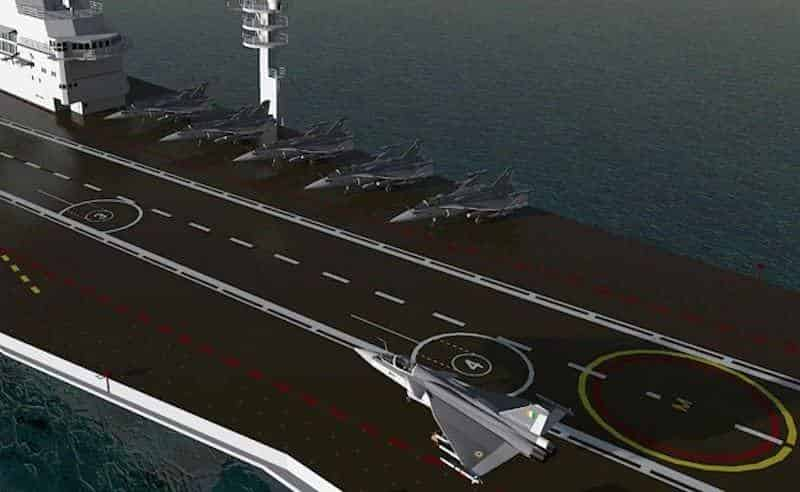The Indian government approved the development of TEDBF (Twin Engine Deck Based Fighter) for Indian Navy

The Aeronautical Development Agency (ADA) constrained by the Defense Research and Development Organization (DRDO) will build up a Twin Engine Deck Based Fighter (TEDBF) for the Indian Navy (IN) rather than continuing with the improvement of an Mk2 variation of the LCA-Navy (NLCA) structure. The DRDO offered to build up another twin-motor deck-based warrior airplane for the Navy dependent on the experience of the Naval Light Combat Aircraft (LCA) and it ought to be prepared by 2026, Navy Chief Admiral Karambir Singh said on 03 December 2019. He additionally noticed that the Navy expected to have the principal Indigenous Aircraft Carrier (IAC-1) Vikrant operational by 2022. “The Qualitative Requirements [QR] are being made. They said they ought to have the option to push it out by 2026. In the event that it meets our time and QR necessities, we will take it [fighter aircraft],” he said at the standard yearly question and answer session in front of the Navy Day.
The benefits of a twin-motor plan are some, first, it will have sped up and mobility, the fly will have improved range since it can convey more fuel and with refueling, it tends to be stretched out to well more than 2000 km. It can convey bigger battle loads. It is additionally less helpless to mechanical disappointments or battle harm. It can convey bigger battle loads. At high heights, utilizing two motors will have colossal supplemental advantages, as losing a solitary motor stream over water or land is a significantly more hazardous experience. Framework repetition is a tertiary advantage of multi-motor airplane, since losing motor outcomes in just a half misfortune altogether accessible push, in addition to excess generators and pressure driven siphons will permit the airplane to fly. What’s more, having two motors will diminish preparing misfortunes.
Naval force would not get on the LCA-Mk2 program because of concern with respect to its single-motor arrangement. The program will run simultaneously with ADA’s different projects, for example, the Medium Weight Fighter (MWF) [formerly the Tejas Mk2] and the Advanced Medium Combat Aircraft (AMCA) extends and use improvements from them. TEDBF will be lighter than the proposed 25 tons Naval-AMCA, creation of which will initiate simply after 2030 yet will more competent than the inconvenient Mig-29K worked by the Indian Navy on board INS Vikramaditya.
The Indian Navy educated that with the arrival regarding the maritime LCA on the Vikramaditya in January 2020, indigenous advancements for deck-based tasks have been demonstrated, which will make ready to build up another “twin-motor” deck-based contender. With this accomplishment, the indigenously evolved specialty innovations explicit to deck based contender tasks have been demonstrated, which will currently make ready to create and make the Twin Engine Deck Based Fighter (TEDBF) for the Indian Navy.
Nitty gritty idea drawings of the contender, named the Twin Engine Deck Based Fighter (TEDBF), are being concentrated by the Aeronautical Design Agency (ADA) and HAL which would in the end assemble the warriors if their advancement is financed by the legislature. The plan of an Air Force variation of the fly, the Omni Role Combat Aircraft (ORCA), with huge structure contrasts, is additionally being considered. This variation would gauge a ton not exactly the Naval variation since it would not require overwhelming fortified landing gear required for activities from the deck of a plane carrying warship.
The absolute plan and improvement costs for models of the airplane ”would cost not exactly the Rs.12,780 crore India Specific Enhancement bundle” marked among India and France towards modifying 36 Rafale contenders being enlisted into the Indian Air Force. The all out structure and advancement costs for twin motor variations of the Tejas contender would cost under Rs.13,000 crores with every warrior for the Navy costing in the scope of Rs. 538 crores. The Indian Air Force variation of the warrior would cost between Rs 35 crore and Rs.71 crores not exactly the Navy variation. The advancement time-scale for the task has been pegged at six years from the time starting financing has been given.
Task creators state they could ”easily create” the new twin motor Tejas variation dependent on the experience they have picked up in testing the Naval model of the Tejas contender. This model is relied upon to arrive on the deck of India’s plane carrying warship, INS Vikramaditya, just because inside the following barely any weeks. The model is controlled by a solitary US-fabricated General Electric F404-GE-IN20 turbofan motor which isn’t believed to be incredible enough to legitimize sequential production of a Naval Tejas in its current symbol other than in restricted numbers.
The essentially bigger twin motor Tejas now being proposed would be fitted with two all the more remarkable General Electric F414 motors and would have a fundamentally higher weapons payload and range. The extra push gave by two motors would likewise ensure a bigger wellbeing edge for pilots while taking off and arriving in sweltering and damp tropical climate conditions out adrift in the Arabian Sea and Bay of Bengal.
Gauging 23 tons, the Navy Twin Engine Deck Based warrior would be about twice as overwhelming as the 13.5 ton Tejas Mk-1 contender which had entered group administration with the Indian Air Force, and preferably progressively over the 17.5 ton Tejas Mk-2 which was to be drafted into the Indian Air Force from 2030. The contender would be in the size of the MiG-29K presently being worked by the Indian Navy on its plane carrying warship, the INS Vikramaditya and would have the capacity of conveying a weapons payload of nine tons. It would highlight collapsing wings to spare space on the deck of plane carrying warships. The stream would probably have a top speed in the scope of Mach 1.6, almost 2,000 kilometers for each hour.
Basically intended for the Indian Navy, the contender will include collapsing wing design which causes the airplane to consume less space in a restricted shed of the plane carrying warship hence diminishing the impression of the airplane when stopped on the flight deck or inside the shed. A collapsing wing has a few weaknesses contrasted with a fixed-wing. It is heavier and has increasingly complex because of associations for electrical, fuel, streamlined and auxiliary frameworks. In Renders, we can see both ORCA in the fixed-wing design for Air power and collapsing wing arrangement fo the Navy. The Naval TEDBF will be 1 ton heavier at 24 tons when contrasted with Air power ORCA which will around 23 tons because of the heavier undercarriage and fortify and raised landing gears which include 700-800kgs and another 200 kgs for collapsing wing framework and its extra pivots. Both the Navy Twin Engine Deck Based warrior and the Air Force Omni Role Fighter would have indigenous sensors and aeronautics which continuously 2020 were at a propelled phase of improvement. This incorporates an Active Electronically Scanned Radar (AESA) which can at the same time track focuses noticeable all around and out adrift or over land with incredible exactness. All the warriors would be worked with “made in India” information connections and correspondence frameworks to empower the planes in a development to safely trade basic sensor data during a crucial. A large group of made-in-India weapons including long range variation of the Astra aerial rocket which had finished tests would arm the planes.
None of things to come variations of the Tejas being considered are a piece of the Navy or Air Force’s current acquisition plans. ”In excess of 750 airplane will require substitution somewhere in the range of 2030 and 2050.” By 2040, a few more seasoned airplane in administration with the Indian Air Force, including the Sukhoi 30MKI, by and by the bleeding edge, would need to resign. Improvement of a bigger, twin motor variation of the Tejas, originators feel, is a gradual advance forward as they at the same time continue with the structure and improvement of a made-in-India covertness contender called the Advanced Medium Combat Aircraft (AMCA), both bigger, more competent and more costly than variations of the Tejas. The AMCA is relied upon to begin entering group administration with the IAF from 2040 if financing is made sure about. A twin motor variation of the Tejas would be in the class of the Rafale, agile with brilliant sensor combination. The way this would be completely structured and created in India would be an immense lift for aspirations in being an aviation power.
Source: Global Security



